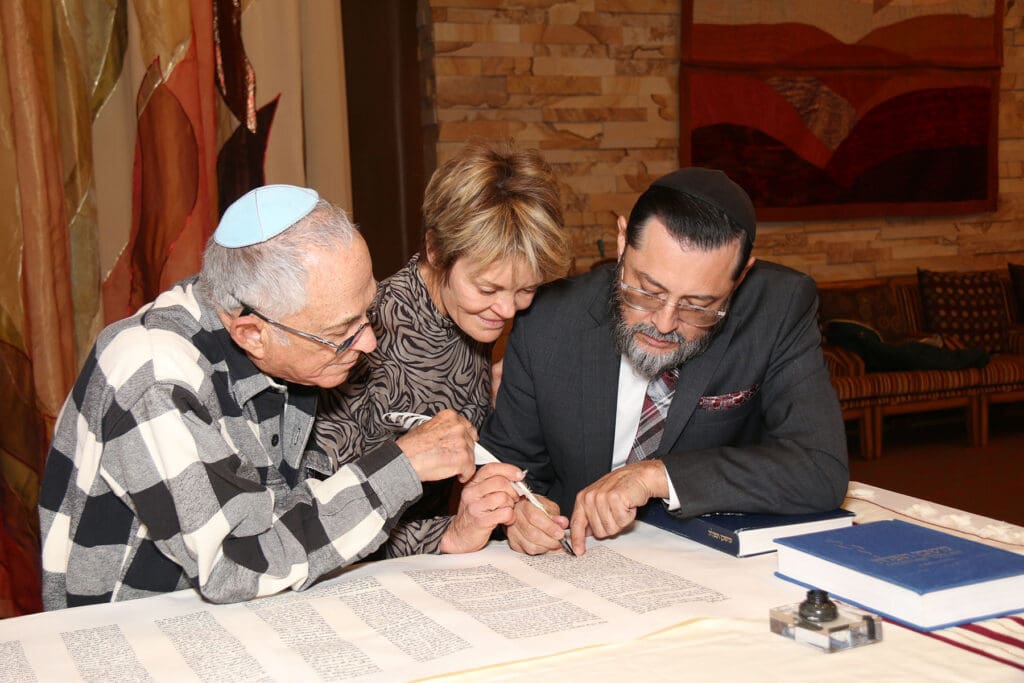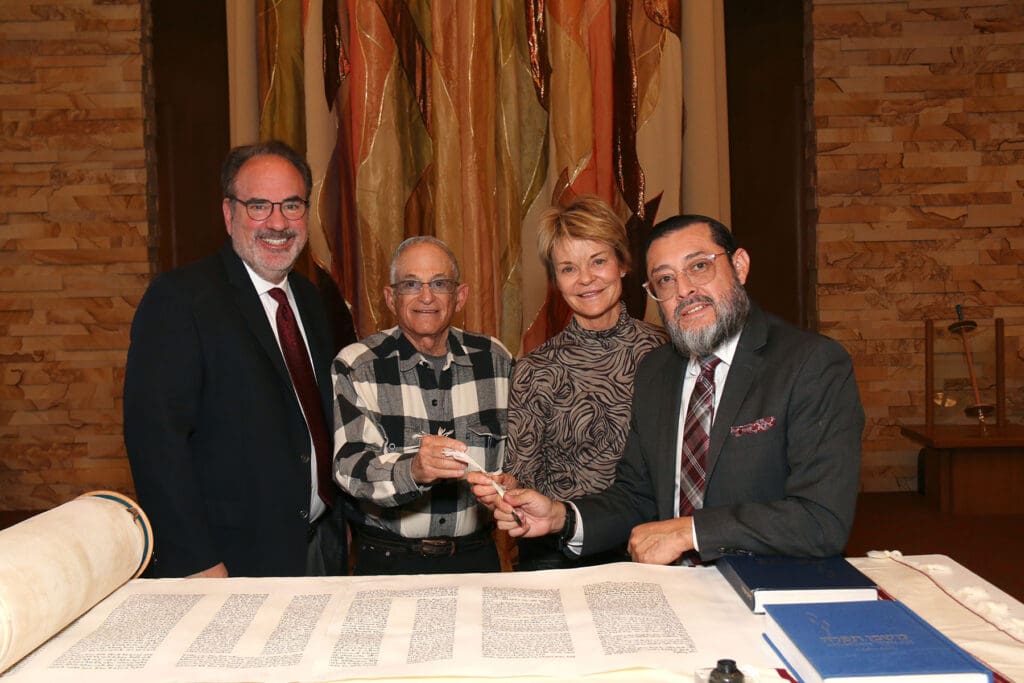Gary & Lynn Kantor
In Hebrew the book is known as Sefer Shemot (“Book of Names”), because it 0pens with the verse, “These are the names of the children of Israel . . .”
On a deeper level, this reflects the fact that it is the book in which our identity (name) as a nation is forged. In English it is known as the Book of Exodus, because it contains the story of our leaving Egypt. Following a lost sheep from his flock, Moses encounters a burning bush.
Enslavement
Sefer Shemot opens with the names of the sons of Israel who settle in Egypt under the protection of their brother Joseph. After they die, Pharaoh enslaves the Hebrews (throughout the exodus narrative, our people are referred to as “Hebrews” and “Israelites”), and commands the Jewish midwives to kill all newborn Hebrew boys. One mother seeks to save her baby by hiding him in a basket in the the Nile River. Pharaoh’s daughter finds the baby and names him Moses (Moshe). Moses grows up in Pharaoh’s palace, tries to help his suffering brethren, gets in trouble, and flees to Midian, where he finds work as a shepherd.
Exodus
Following a lost sheep from his flock, Moses encounters a burning bush. G‑d speaks to him from the fire and commands him to go back to Egypt in order to free his brethren from bondage.
Moses and his brother, Aaron, repeatedly approach Pharaoh with the famous demand, “Let my people go.” When Pharaoh refuses, G‑d brings ten plagues on Egypt: blood, frogs, lice, wild beasts, pestilence, boils, hail, grasshoppers, darkness, and death of the firstborn. Finally, after the tenth plague, Pharaoh agrees, and they are off.
G‑d gives the Israelites their first commandments, to create a calendar and to offer the Passover sacrifice, and protects the newborn nation with clouds of glory, guiding them with a pillar of cloud by day and a pillar of fire by night.
Splitting of the Sea
At the last minute, Pharaoh has a change of heart and leads his army into the desert to retrieve his former slaves. Israel is trapped between the Egyptian army and the Red Sea. G‑d makes a miracle: the sea splits and the Jews pass through on dry land.
When the Egyptians follow, the sea covers them and they drown. The thankful Israelites sing a song of praise to G‑d.
Revelation
Israel arrives at Mount Sinai; they begin to purify themselves, and Moses goes up the mountain. On the third day, G‑d appears and proclaims the Ten Commandments to the entire nation. The eternal covenant between G‑d and His people is formed. The eternal covenant between G‑d and His people is formed.
Action
Translating the covenant into action, G‑d conveys to Israel laws covering many areas of life, ranging from ownership of slaves to protecting the vulnerable.
Build Me a Home
Perhaps as a sign of their renewed relationship, following the sin of the golden calf (see Sin and Forgiveness),1 G‑d commands that Israel build Him a Tabernacle, in which they will worship Him and He will dwell among them.
It is to be made of tapestries and hides draped over wooden beams. It shall include an inner room, containing the ark in which the tablets are stored, and an outer room, containing the showbread table, the menorah (lamp) and the incense altar. It is to be surrounded by a courtyard, where there is a laver and a large copper altar for animal sacrifices.
Sin & Forgiveness
Moses ascends Mt. Sinai for 40 days, after which he is to descend with two tablets bearing the Ten Commandments. The people fear that he will not return, and create and worship a golden calf.
Upon seeing what has happened, Moses shatters the tablets on the ground. Moses goes up for another 40 days and pleads with G‑d to forgive His people, and finally, on Yom Kippur, He does.
Tabernacle
The Tabernacle is made, and Moses erects it according to G‑d’s specifications. G‑d’s presence (manifested in a cloud) fills the Tabernacle.
The “Book of Names” begins with a nameless group of slaves, and ends with a G‑dly people, proudly bearing His name, honored to serve Him and make Him a home in this world.


